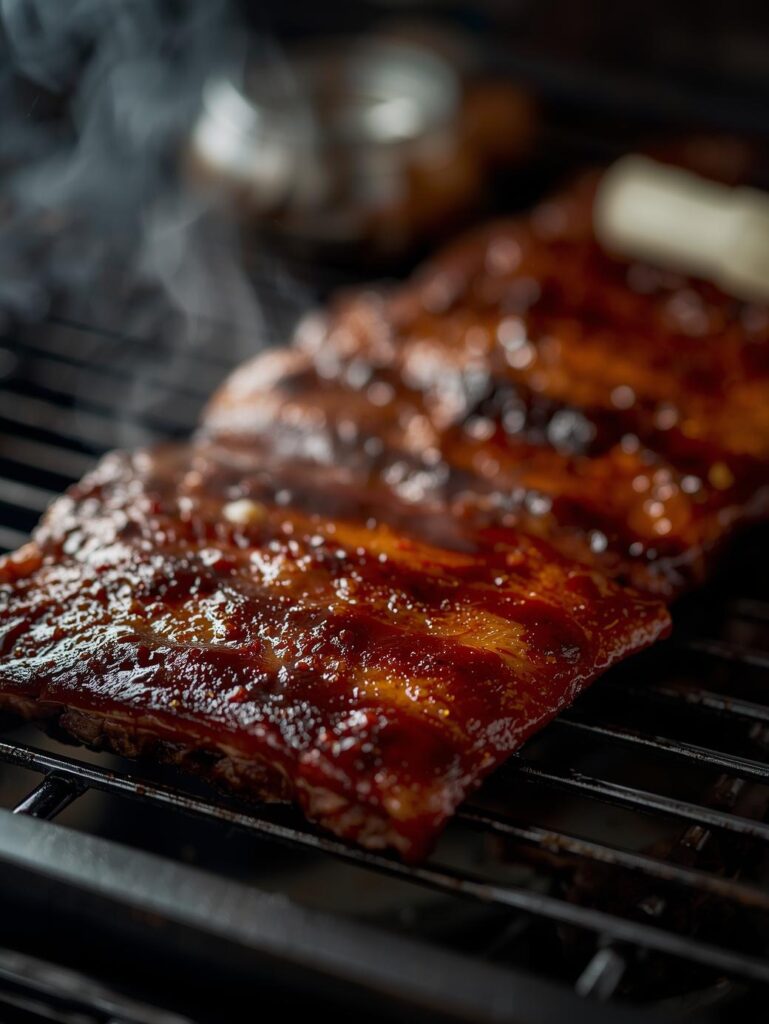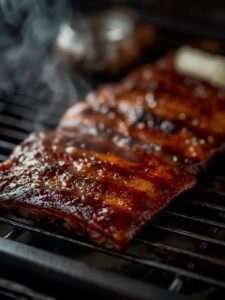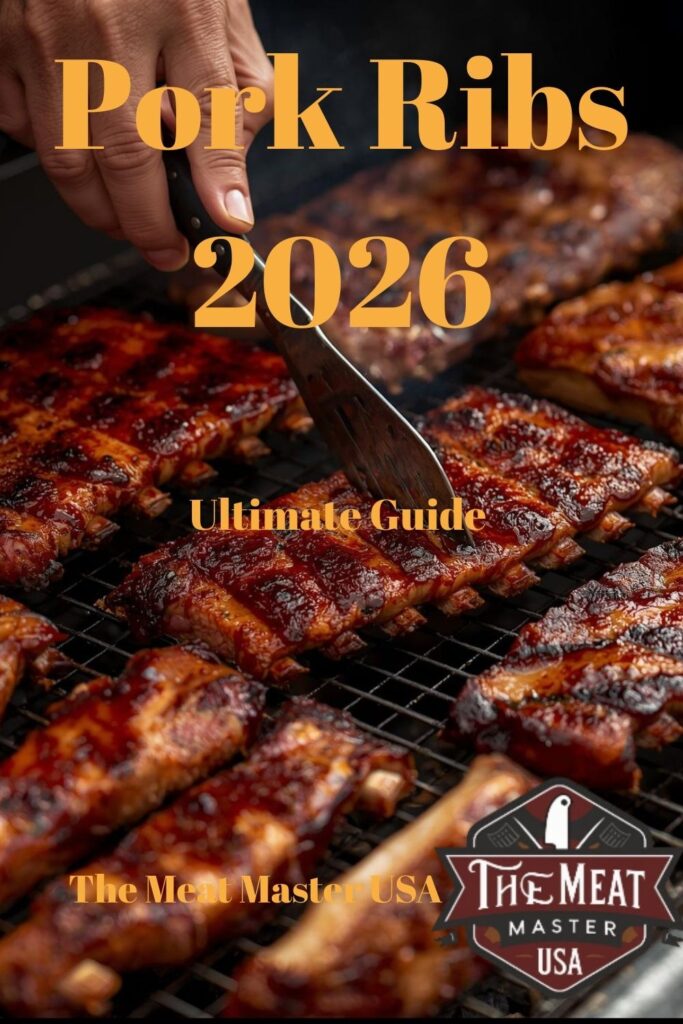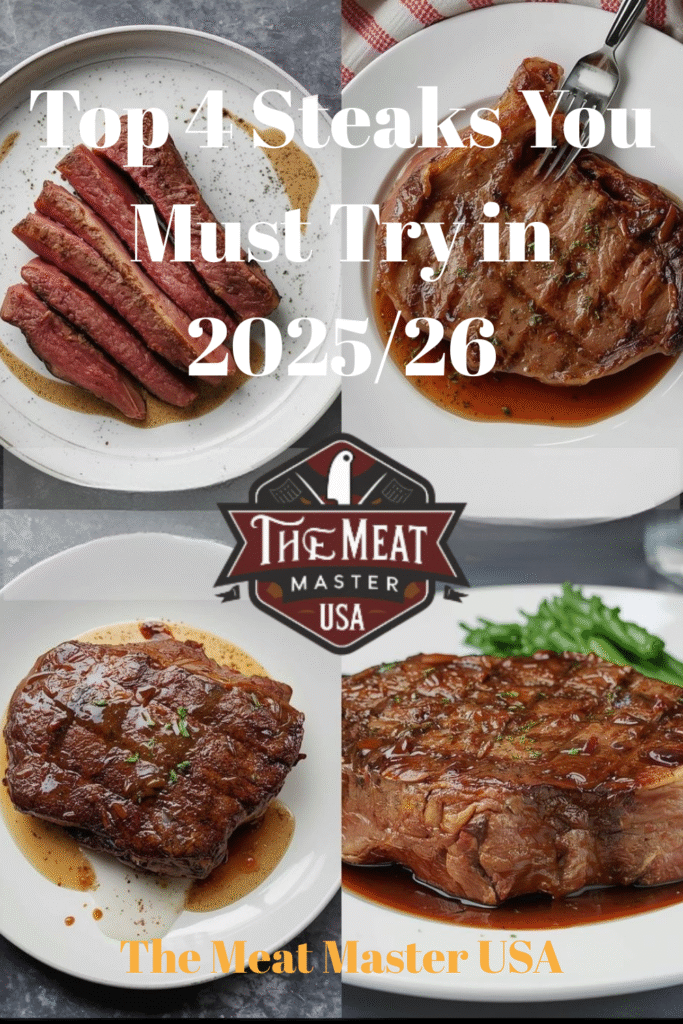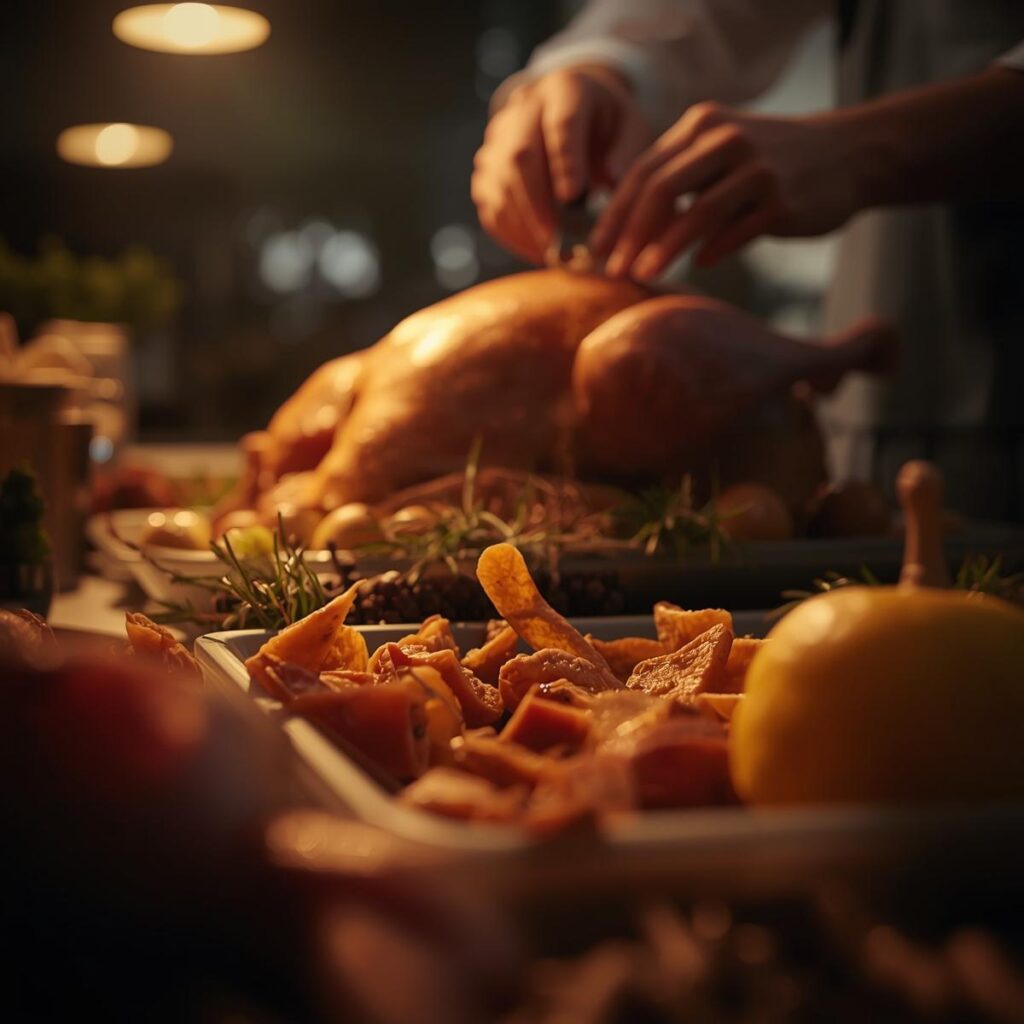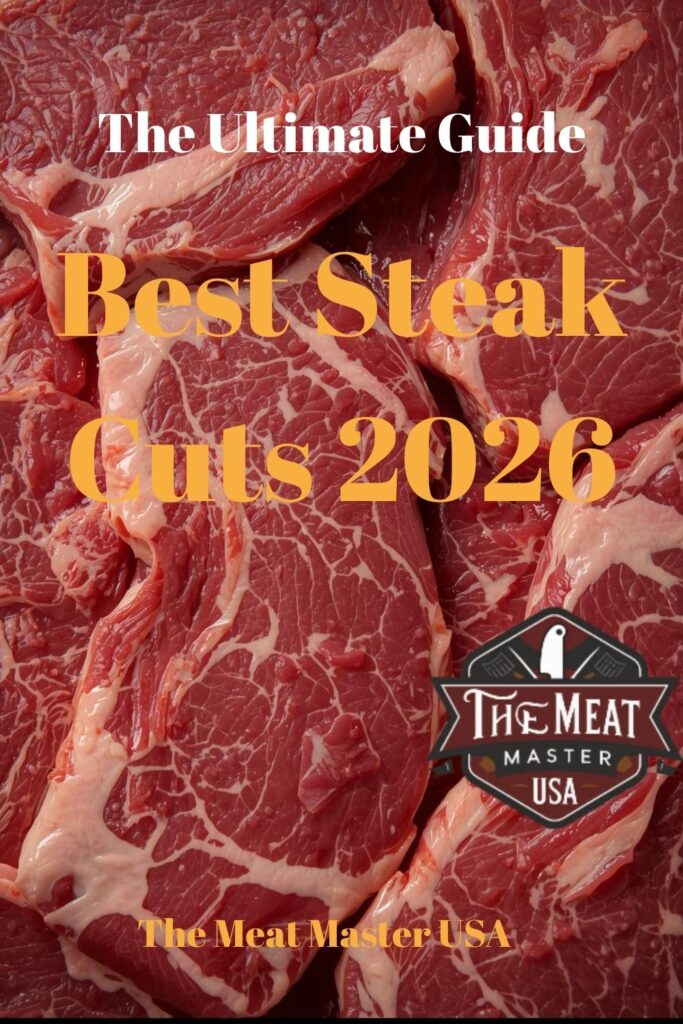Expert’s Note: This guide is part of our comprehensive American BBQ Regional Bible. Explore our complete master guide to discover all US barbecue traditions and techniques.
Table of Contents Hide ContentsDiscovering the Secret Techniques of Carolina BBQ
There’s a lot of talk about the “secrets” of barbecue, from a special rub to a family-secret sauce. But in the Carolinas, the secret is not one single thing; it’s a deep, rich tradition rooted in geography and history. The “secret” of Carolina BBQ isn’t a magical ingredient; it’s a way of life, a method passed down through generations that celebrates simplicity and the unique flavor of slow-cooked pork.
Carolina BBQ: Complete Guide to Eastern vs Western Styles, Sauces & Techniques
Discovering the Secret Techniques of Carolina BBQ
This guide will unlock the true secrets of Carolina style BBQ. We’ll journey through the Carolinas to discover the fierce regional divide, the legendary Carolina BBQ sauce, and the essential techniques that make this barbecue so unique. By the end, you’ll be able to cook pork like a true pitmaster from the Old North State.
BBQ Foundations
- Smoking Basics – Master low and slow cooking
- Pork Cuts Guide – Choose the right cuts for BBQ
- BBQ Methods Encyclopedia – Complete techniques library
- US BBQ Styles – Explore regional traditions
The Core Secret: It’s Not One Thing, It’s Two
The first thing to understand about Carolina BBQ is that there isn’t one style; there are two. A rivalry as old as the hills, the Eastern vs Western BBQ debate defines the entire cuisine. The main differences are the cut of pork used and, most importantly, the sauce.
If you’re unsure about pork cuts, our comprehensive pork cuts guide explains every cut from shoulder to ham.
| Characteristic | Eastern Carolina BBQ | Western Carolina (Lexington-Style) BBQ |
|---|---|---|
| Meat | Whole Hog | Pork Shoulder |
| Sauce Base | Vinegar and Red Pepper Flakes | Vinegar, Ketchup, and Spices |
| Flavor Profile | Tangy, light, and spicy | Sweet, tangy, and smoky |
| Preparation | Often chopped or pulled from the entire hog | Chopped or sliced from the pork shoulder |
| Common Side | Slaw (without sauce) | Red Slaw (with ketchup-based sauce) |
| Primary Wood | Oak or Hickory | Hickory or Oak |
Master Pork BBQ: Essential guides for perfect pork every time:
Pork Perfection
- Pork Shoulder Guide – Master pulled pork
- Pork Ribs Guide – All rib types explained
- Pork Temperature Guide – Safe internal temperatures
- Smoking Wood Guide – Perfect wood pairings
Eastern Carolina BBQ: The Whole Hog Tradition
Eastern Carolina BBQ is the original. Rooted in colonial traditions, this style of barbecue uses the entire pig, cooked low and slow over wood coals. The result is a mix of different textures and flavors from every part of the hog.
The Meat: Whole Hog Mastery
The whole hog is the star. This is a very labor-intensive process, taking 12-24 hours. The different parts of the pig cook at different rates, resulting in a combination of rich belly meat, lean loin meat, and the crispy crackling from the skin.
For large cut cooking, learn about carryover cooking and why resting meat is crucial in our meat science guides.
The Sauce: Vinegar-Based Simplicity
The sauce is what defines Eastern Carolina style BBQ. It is a very simple, thin, vinegar-based sauce seasoned with salt, red pepper flakes, and sometimes black pepper. This sauce is used as a baste during the cook and as a final dressing. The purpose of the sauce isn’t to add a thick, sweet glaze but to cut through the richness of the fatty pork.
The Technique: Low and Slow Perfection
The cooking is all about “low and slow.” The pig is cooked over indirect heat for hours on end until the meat is falling off the bone. This requires constant vigilance and an understanding of the pit. We explain the difference in these cooking styles in our guide, What’s the Difference Between Grilling and Barbecuing?
The whole hog BBQ tradition is a community event, often cooked for large gatherings, and a true testament to the region’s heritage.
Western Carolina BBQ: The Pork Shoulder and Ketchup
Western Carolina BBQ, often called Lexington-style, is a more refined version of its Eastern cousin. While Eastern style uses the whole hog, Western style focuses on the pork shoulder, which is cooked until tender and then chopped or sliced.
The Meat: Pork Shoulder Excellence
The pork shoulder BBQ is the main event. It’s a tough, fatty cut of meat that is perfect for a long, slow cook. It has a high amount of connective tissue and fat, which melts and makes the meat incredibly juicy and tender.
If you’re new to smoking, our beginner’s guide to smoking meat covers all the fundamentals you need to know.
The Sauce: The Lexington Twist
The sauce is a key differentiator. It’s still vinegar-based, but it adds ketchup, brown sugar, and a few more spices to create a flavor that is both tangy and sweet. This sauce is a bit thicker and richer than the Eastern style.
The Technique: Brick-Pit Tradition
The cooking method is still low and slow, typically in a brick-pit smoker. The meat is constantly basted with the sauce during the cook to build up a rich, flavorful bark. The Carolina BBQ techniques for a pork shoulder are all about temperature control and patience.
This Lexington style BBQ is often served with “red slaw,” a unique side dish made with a vinegar-ketchup sauce that perfectly complements the rich pork.
Running into issues? Solve common Carolina BBQ challenges:
Troubleshooting
- Common BBQ Mistakes – Avoid these frequent errors
- Tough Meat Fix – Solve texture problems
- Temperature Mastery – Perfect doneness every time
- Heat Control – Maintain perfect temps
The Heart of the Matter: The Legendary Carolina BBQ Sauce
The sauce is the true “secret” of Carolina BBQ. It’s the final layer of flavor that brings the entire dish together. Here are two simple master recipes for each style.
Eastern Carolina BBQ Sauce Recipe
This is a thin, peppery, and tangy sauce that’s perfect for whole hog BBQ.
Ingredients:
-
2 cups apple cider vinegar
-
1 tbsp salt
-
1 tbsp crushed red pepper flakes
-
1 tsp black pepper
Instructions:
-
Mix all ingredients together in a jar or bottle.
-
Shake well before using.
-
Use as a baste during cooking and as a finishing sauce.
Western Carolina BBQ Sauce Recipe
This is a slightly thicker, sweeter, and tangier sauce that is perfect for a pork shoulder.
Ingredients:
-
1 cup apple cider vinegar
-
1 cup ketchup
-
1/2 cup brown sugar
-
1 tbsp Worcestershire sauce
-
1 tsp salt
-
1 tsp black pepper
-
1/2 tsp cayenne pepper (optional)
Instructions:
-
Whisk all ingredients together in a saucepan over medium heat.
-
Bring to a light simmer, whisking constantly.
-
Remove from heat and let cool. Store in an airtight container.
Want to explore more sauce styles? Our BBQ sauces guide covers everything from Carolina vinegar to Kansas City sweet.
The Essential Carolina BBQ Techniques
To master either style of Carolina BBQ, you need to understand the fundamental techniques.
Low and Slow: This is the most important rule. The cooking temperature should be between 225-275°F. This is crucial for breaking down the tough connective tissue in pork. Learn more in our low and slow cooking guide.
The Wood: The choice of wood is critical. Oak and hickory are the traditional choices. They provide a clean smoke that complements the pork without overpowering it. Our smoking woods guide explains all the options.
The Baste: The thin Carolina BBQ sauce is not a finishing sauce; it’s a cooking tool. Basting the meat periodically throughout the cook helps to build up a crust and adds layers of flavor.
No Peeking: As tempting as it is, avoid opening the smoker or pit. Every time you open the lid, you lose valuable heat and moisture, which can ruin the final product.
Master Regional BBQ: Explore our complete collection of BBQ traditions:
Continue Your BBQ Journey
Techniques
Pork Mastery
BBQ Science
FAQ: Discovering the Secret Techniques of Carolina BBQ
1. What is the main difference between Eastern and Western Carolina BBQ?
The main difference lies in the meat and the sauce. Eastern Carolina style BBQ uses the whole hog and a simple vinegar and pepper sauce. Western (Lexington-style) uses pork shoulder and a sauce with a ketchup base.
2. What kind of meat is used in Carolina BBQ?
The primary meat used in Carolina BBQ is pork. Eastern style uses a whole hog, while Western style uses pork shoulder.
3. What is Carolina BBQ sauce made of?
Eastern Carolina BBQ sauce is a simple mix of vinegar, red pepper flakes, salt, and pepper. Western style adds ketchup and brown sugar to the vinegar base.
4. Is Carolina BBQ a low-and-slow technique?
Yes, the core of all Carolina BBQ techniques is cooking the meat low and slow. The temperature is typically kept between 225-275°F for many hours to make the meat tender.
5. What is “red slaw”?
“Red slaw” is a unique side dish popular in Western Carolina style BBQ. It is a shredded cabbage slaw that is dressed with a ketchup-based sauce, rather than the mayonnaise-based dressing of traditional coleslaw.
6. How do you serve Carolina BBQ?
The meat is typically chopped or pulled and served on a bun. The sauce is either a baste during cooking or a finishing condiment. It’s often accompanied by a side of slaw and hush puppies.
7. Is the wood important?
Yes, the wood is very important. The classic Carolina BBQ uses oak or hickory wood, which provides a clean, smoky flavor that complements the pork without overpowering it.
Conclusion
The “secrets” of Carolina BBQ are simple and beautiful. They are a celebration of tradition, a dedication to the art of low-and-slow cooking, and an ode to a pork-based cuisine that is unlike any other. By understanding the regional differences and the role of the sauces, you can move beyond a basic recipe and begin to truly appreciate this unique form of barbecue. Whether you choose to try the tangy, whole hog of Eastern Carolina or the sweet and smoky pork shoulder of Western Carolina, you’ll be taking part in a tradition that’s as rich as the flavor.
Ready to Master Carolina BBQ?
Join thousands of BBQ enthusiasts who are transforming their backyard cooking with our proven techniques, recipes, and pitmaster secrets.
Join 23,000+ BBQ enthusiasts already mastering their craft with The Meat Master USA

